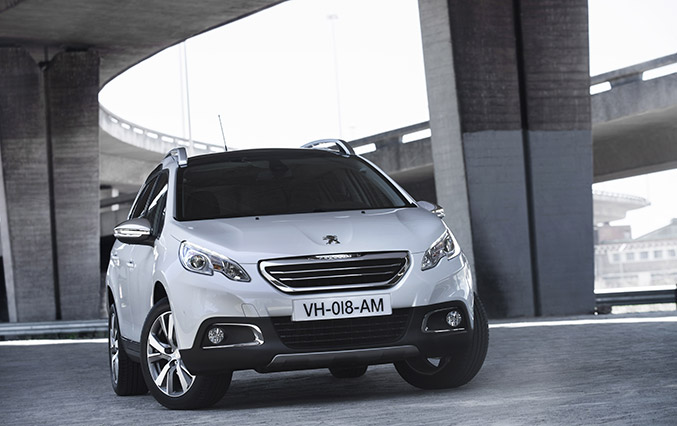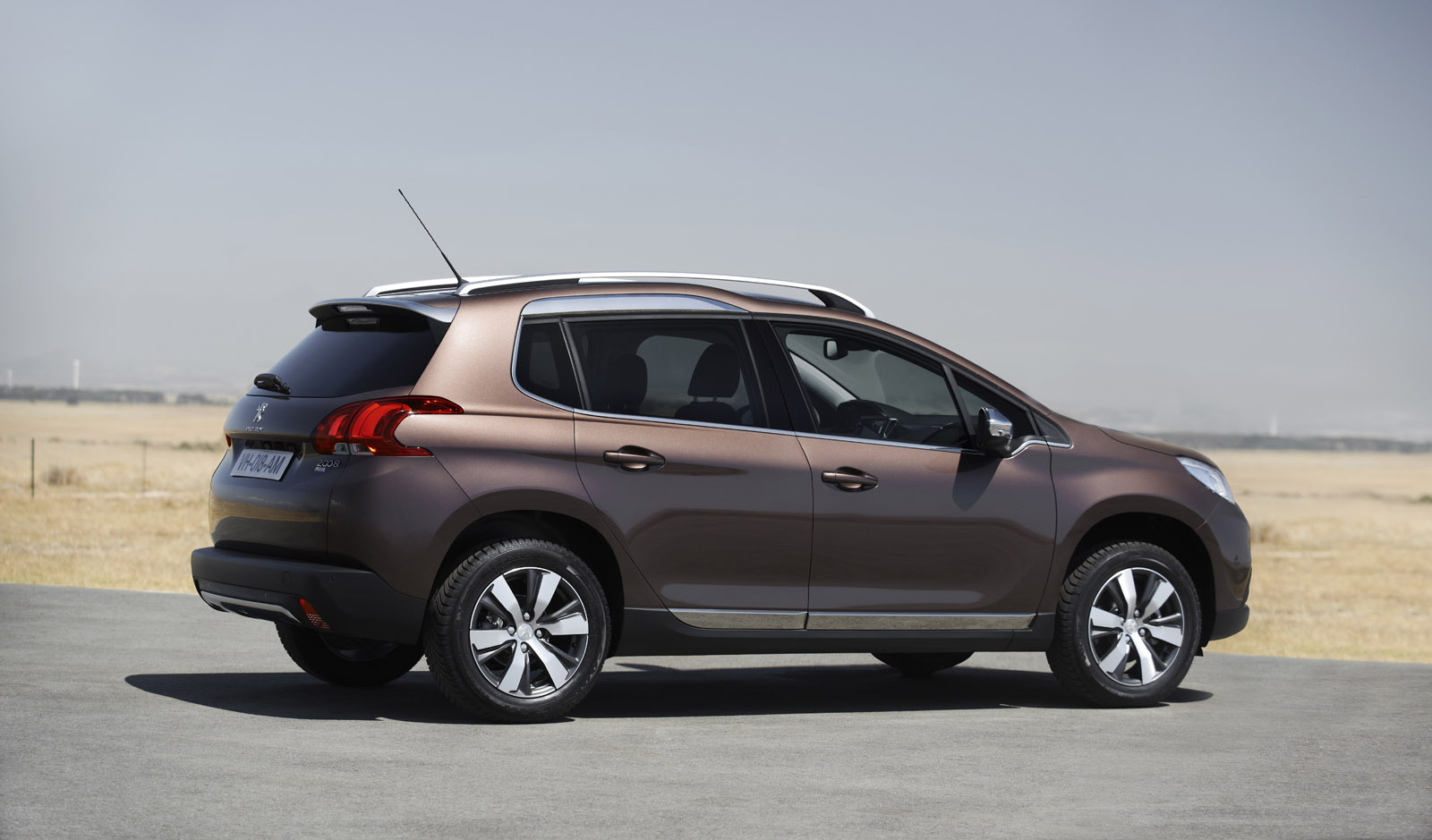 Taking centre stage on this year’s Geneva Motor Show stand will be the all-new Peugeot 2008, an urban crossover like no other. Featuring a contemporary design language, this practical, versatile and exceptionally capable vehicle addresses the increasing demands of customers around the world. Further enhancing Peugeot’s strategy of developing its crossover range and attracting new customers, this is a truly global car. It’s the first vehicle produced by the Marque which has been designed, developed and engineered simultaneously by employees based in Europe, China and Latin America.
Taking centre stage on this year’s Geneva Motor Show stand will be the all-new Peugeot 2008, an urban crossover like no other. Featuring a contemporary design language, this practical, versatile and exceptionally capable vehicle addresses the increasing demands of customers around the world. Further enhancing Peugeot’s strategy of developing its crossover range and attracting new customers, this is a truly global car. It’s the first vehicle produced by the Marque which has been designed, developed and engineered simultaneously by employees based in Europe, China and Latin America.
The 2008 brings together the expertise and experience of two acclaimed Peugeot vehicles; as a compact crossover, it blends the success and design of the award-winning 3008 with all the features, performance and state-of-the-art engines of the new 208 supermini. The result is an innovative new vehicle for the B-segment.
With a characterful on-the-road presence, the 2008 is intended for young city-dwellers who love the urban environment but also enjoy escaping from it at every opportunity. In keeping with the dynamism of its profiled silhouette, power comes from the latest generation of low fuel consumption Peugeot engines. With e-HDi diesel and three-cylinder petrol technology, Peugeot’s urban crossover stands out from the competition thanks to CO2 emissions starting at just 98g/km.
The 2008 is the latest expression of Peugeot’s brand strengths, already clearly visible in the 208; athletic design, an engaging driving experience, high levels of comfort and outstanding quality in materials and finish.
Order books for the Peugeot 2008 open at UK retailers in June and the new car will officially go on sale later in the Summer. Demand is expected to be as strong as it has been for the acclaimed 208, which secured 20,000 orders in the UK during its first six months on sale.
Peugeot 2008 HYbrid Air: a step towards a cleaner future
The goal was simple: substantial reduction of fuel consumption and CO2 emissions by means of affordable technology which can be applied to passenger cars and light commercial vehicles in the B and C segments in global markets. The result is HYbrid Air, and the most obvious way to demonstrate it is in the all-new Peugeot 2008.
It combines tried and tested systems from the new generation of three-cylinder petrol engines with innovation in the form of compressed air technology. More than 80 patents testify to the fact that Peugeot has again established itself as a true automotive pioneer.
Hybrid technology is about combining two energies to achieve the highest efficiency in various situations. The compressed air system will assist, or even take the place of, the petrol engine during the phases which consume the most energy, i.e. acceleration and moving off. HYbrid Air uses components new to the motor industry but widely tested in other sectors such as aeronautics.
Peugeot 208 HYbrid FE: 49g/km yet 0-62mph in just 8.0 seconds
Developed as a concept car to illustrate the direction Peugeot believes engine technology can take, the 208 HYbrid FE Concept will be making its world debut in Geneva.
The supermini benefits from a number of technical enhancements including a petrol/electric hybrid powertrain, optimised aerodynamics, a 200kg weight reduction and low rolling resistance wheels and tyres. Illustrating the unique relationship between Peugeot and Total Lubricants – on-going since 1995 – the car also features specially formulated advanced engine fluids.
The result is a car which emits just 49g/km of CO2, a figure which is two times less than the already very efficient Peugeot 208 1.0-litre VTi. Yet it will still accelerate from 0-62mph in just 8.0 seconds – almost as quick as the 208 GTi. Speaking of which…
Peugeot 208 XY and 208 GTi: completing the family
While the 208 GTi brings an iconic badge back to life… the Peugeot 208 XY is an exclusive and urban chic vehicle, both are displayed in Geneva as the ‘jewels’ in a now-complete 208 range.
Designed to promote the Marque’s strategy to move more upmarket, both feature three-door body styles, strong exterior identities, distinctive headlight signatures on their front faces, exclusive 17-inch alloy wheels and a sophisticated reworking of the cabin materials and colours. Both are also sculpted, athletic and elegant, revealing how Peugeot style has a genuine ability to turn heads.
The 208 XY offers powerful and economical petrol and e-HDi diesel engines, with outputs between 92 to 155bhp. For the 208 GTi, its chassis can comfortably handle the full potential of the 1.6-litre THP 200bhp engine coupled with the manual transmission’s six close-ratio gears. That it does so with CO2 emissions of just 139g/km is a real achievement.
Peugeot 208 T16: Motor Sport at the heart of the brand DNA
Also on the Geneva show stand will be an illustration of Peugeot’s motor sport credentials. In its rally and track competition versions, the 208 is receiving an exceptional commercial reception and has already achieved successes, with a double at Monte Carlo 2013 in its class from the 208 R2.
A new chapter begins at Geneva 2013 with the world debut of a 208 complying with the latest R5 regulations. Glimpsed at the Paris Motor Show last Autumn, the sporting genes of the Marque can now also be seen in its name: 208 T16. Intended to succeed the 207 Super 2000, the 208 T16 is currently building up test miles with the aim of establishing itself as a strong force for winning national and international titles.
Peugeot RCZ R: the brand’s most powerful production car ever
The stunning RCZ R Concept gives the strongest clues yet about the RCZ R production model, which will be unveiled later this year. Promising an intense dynamic experience, the Sports Coupé will benefit from bespoke suspension and wheels, plus a Torsen limited slip differential. That it echoes the colours of the Peugeot Onyx Concept car is intentional.
It will feature a new 1.6-litre THP 260bhp engine, with an efficiency that will set a new industry benchmark for this class of car. The target is for a specific power of 160bhp/litre, among the highest in the world for a production vehicle, and emissions expected to be just 155g/km.
Peugeot Onyx: inspiration, imagination, exhilaration
In the great tradition of Peugeot supercars, the Onyx will take the breath away of visitors to the 2013 Geneva Motor Show. Under its radical and sculpted silhouette hides the heart of an athlete: built on a carbon shell, the 3.7-litre 600bhp V8 HDi hybrid engine is mounted in a rear central position and mated to a six-speed sequential gearbox.
At 4.65m long and riding on 20-inch wheels, the bodywork stands out because of the contrasting materials and colours: pure copper for the wings and doors, matt black carbon for the other body panels.
Framed by aluminium arches, the ‘double-bubble’ glass roof reveals the carbon structure and an innovative passenger compartment.
With the Onyx, Peugeot continues its consideration of new and innovative materials for the future of automotive manufacturing. The car features ‘newspaper wood’, produced from compressed used newspapers and used to shape the dashboard and centre console.
The latest innovations on the Peugeot stand in Geneva serve to demonstrate how it plans to move the brand more upmarket, with modern designs, clever technology and features that enhance desirability. Peugeot places great importance on remaining at the forefront for low CO2 emission vehicles, which it presently leads with an average of just 121.6g/km.
Source: Peugeot
Previous article
Rinspeed microMAX – the networked swarm car



